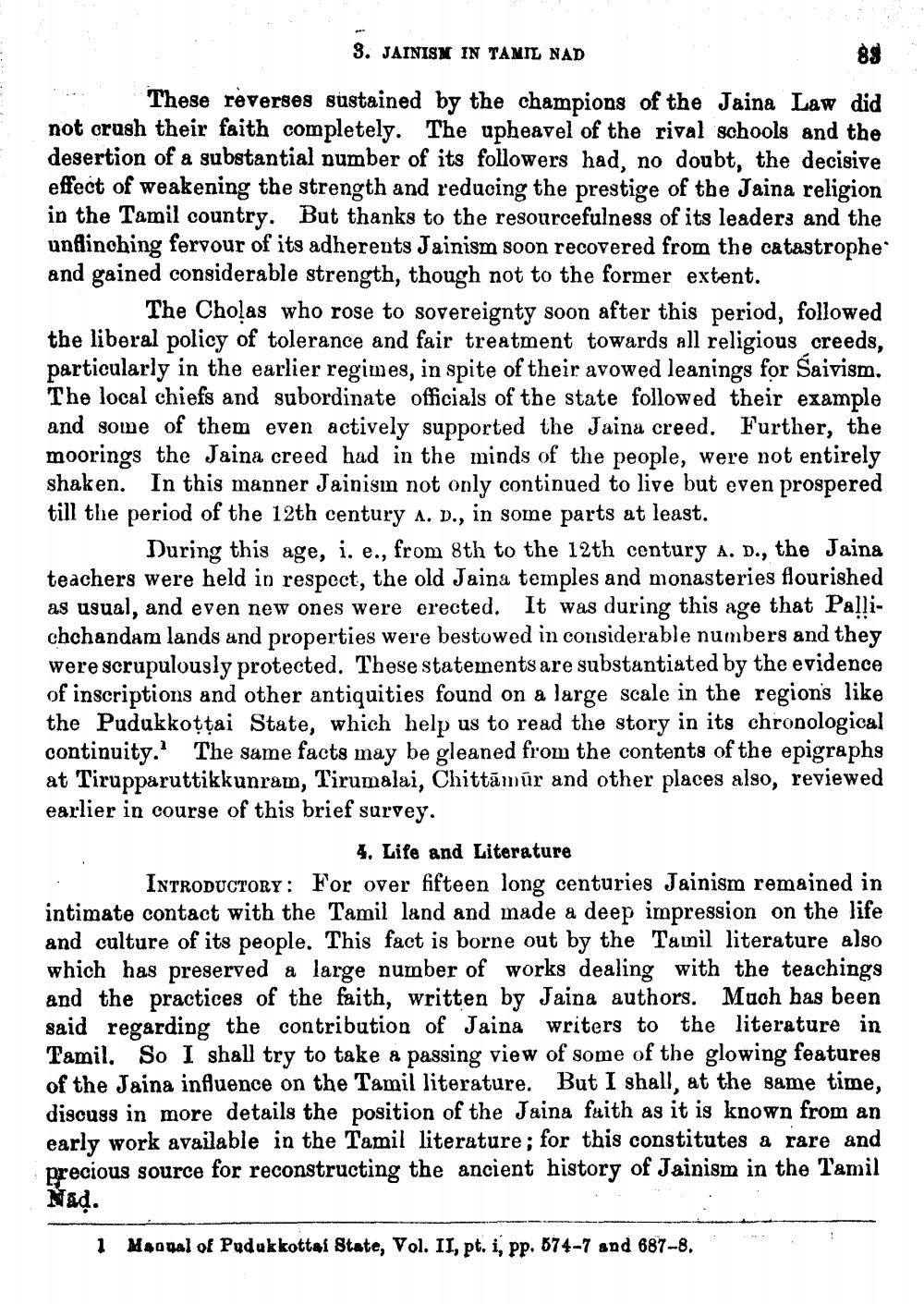________________
3. JAINISM IN TAMIL NAD
RO
These reverses sustained by the champions of the Jaina Law did not crush their faith completely. The upheavel of the rival schools and the desertion of a substantial number of its followers had, no doubt, the decisive effect of weakening the strength and reducing the prestige of the Jaina religion in the Tamil country. But thanks to the resourcefulness of its leaders and the unflinching fervour of its adherents Jainism soon recovered from the catastrophe and gained considerable strength, though not to the former extent.
The Choļas who rose to sovereignty soon after this period, followed the liberal policy of tolerance and fair treatment towards all religious creeds, particularly in the earlier regimes, in spite of their avowed leanings for Saivism. The local chiefs and subordinate officials of the state followed their example and some of them even actively supported the Jaina creed, Further, the moorings the Jaina creed had in the minds of the people, were not entirely shaken. In this manner Jainism not only continued to live but even prospered till the period of the 12th century A. D., in some parts at least.
During this age, i. e., from 8th to the 12th century A. D., the Jaina teachers were held in respect, the old Jaina temples and monasteries flourished as usual, and even new ones were erected. It was during this age that Pallichchandam lands and properties were bestowed in considerable numbers and they were scrupulously protected. These statements are substantiated by the evidence of inscriptions and other antiquities found on a large scale in the regions like the Pudukkottai State, which help us to read the story in its chronological continuity. The same facts may be gleaned from the contents of the epigraphs at Tirupparuttikkunram, Tirumalai, Chittāmūr and other places also, reviewed earlier in course of this brief survey.
4. Life and Literature . INTRODUCTORY: For over fifteen long centuries Jainism remained in intimate contact with the Tamil land and made a deep impression on the life and culture of its people. This fact is borne out by the Tamil literature also which has preserved a large number of works dealing with the teachings and the practices of the faith, written by Jaina authors. Much has been said regarding the contribution of Jaina writers to the literature in Tamil. So I shall try to take a passing view of some of the glowing features of the Jaina influence on the Tamil literature. But I shall, at the same time, discuss in more details the position of the Jaina faith as it is known from an early work available in the Tamil literature; for this constitutes a rare and precious source for reconstructing the ancient history of Jainism in the Tamil Nad.
1 Manual of Pudukkottai State, Vol. II, pt. i, pp. 874-7 and 687-8.




